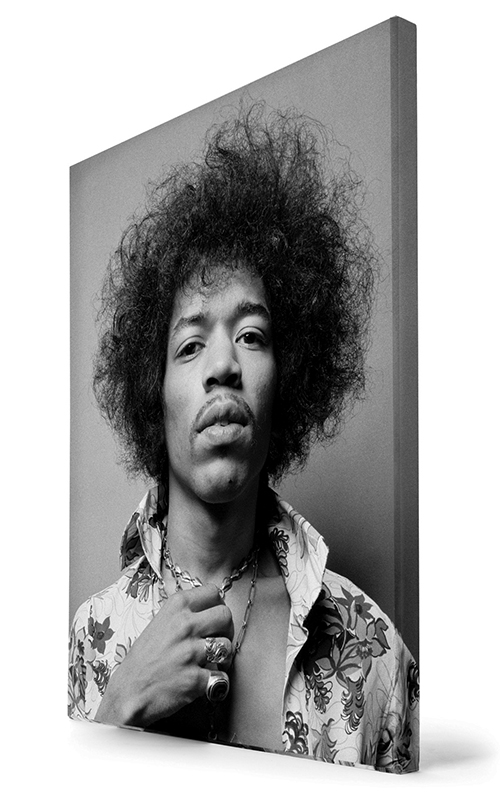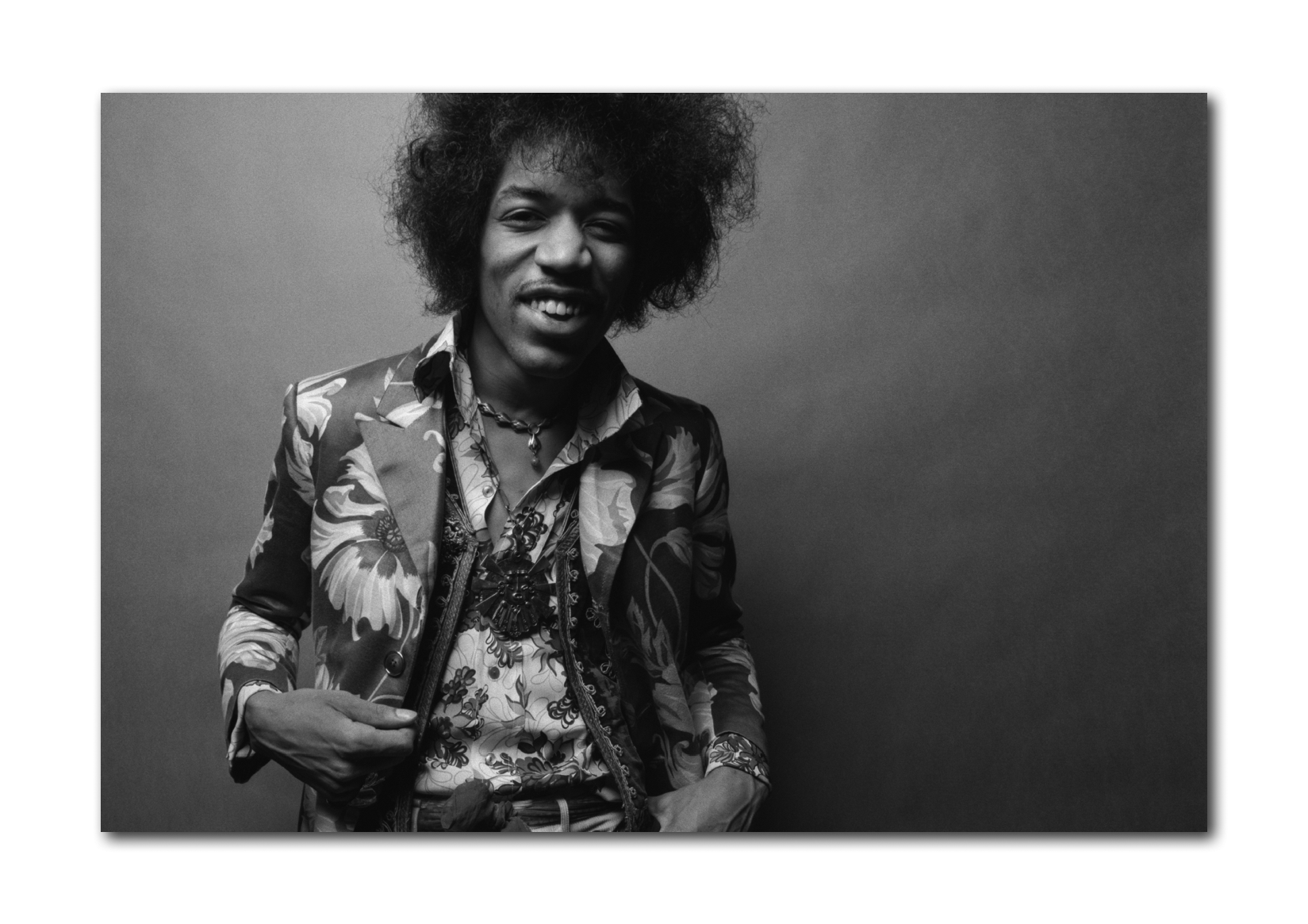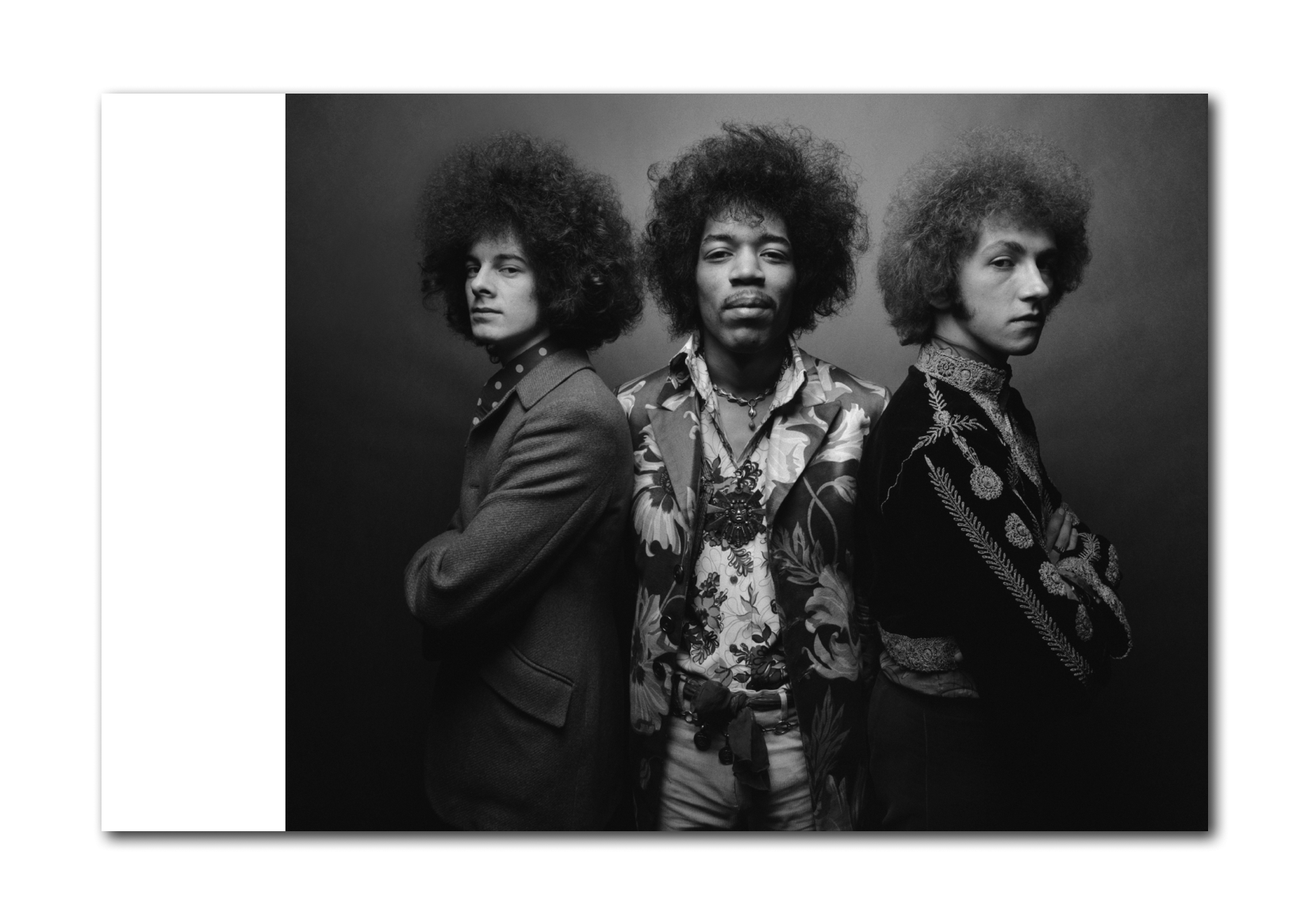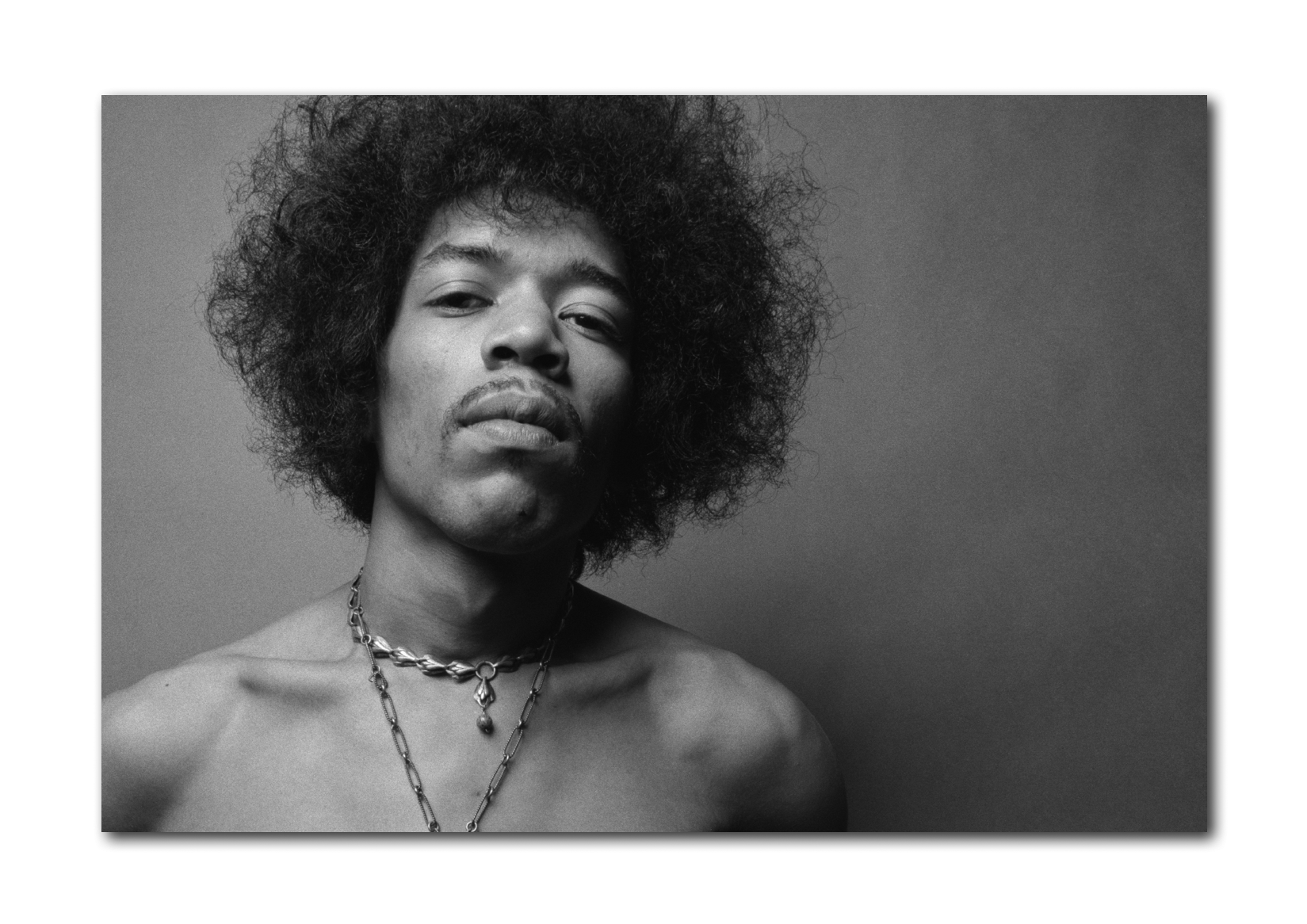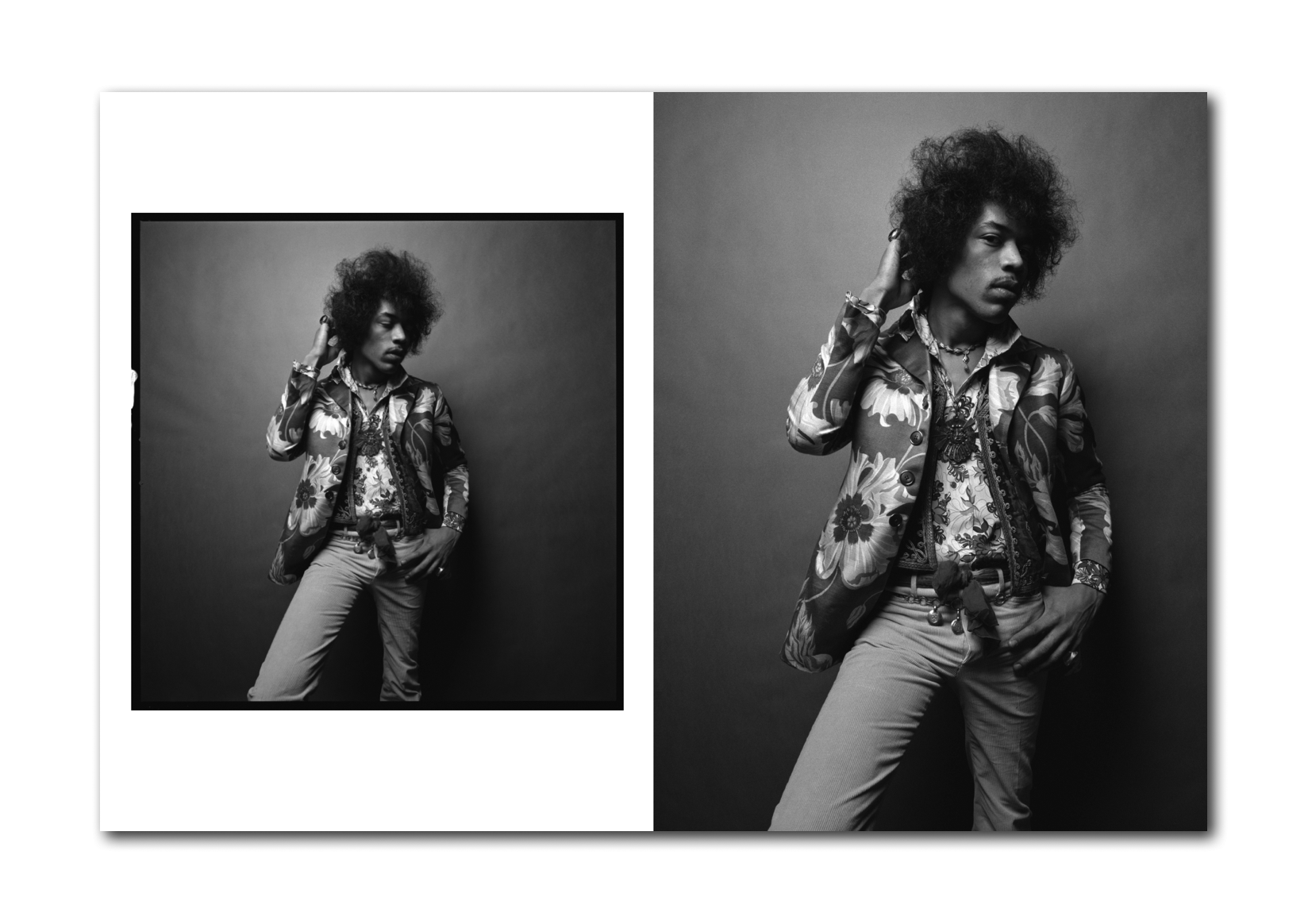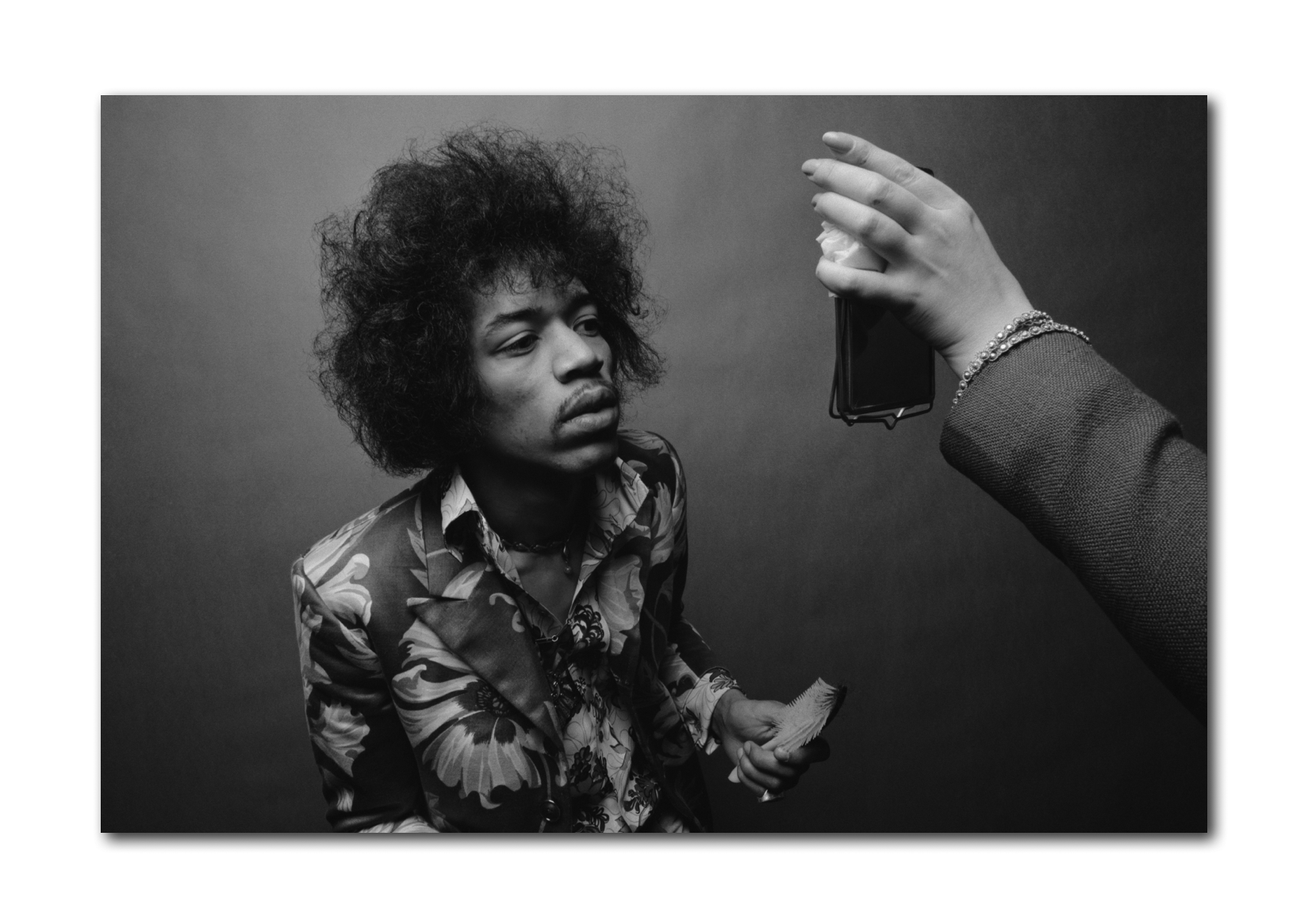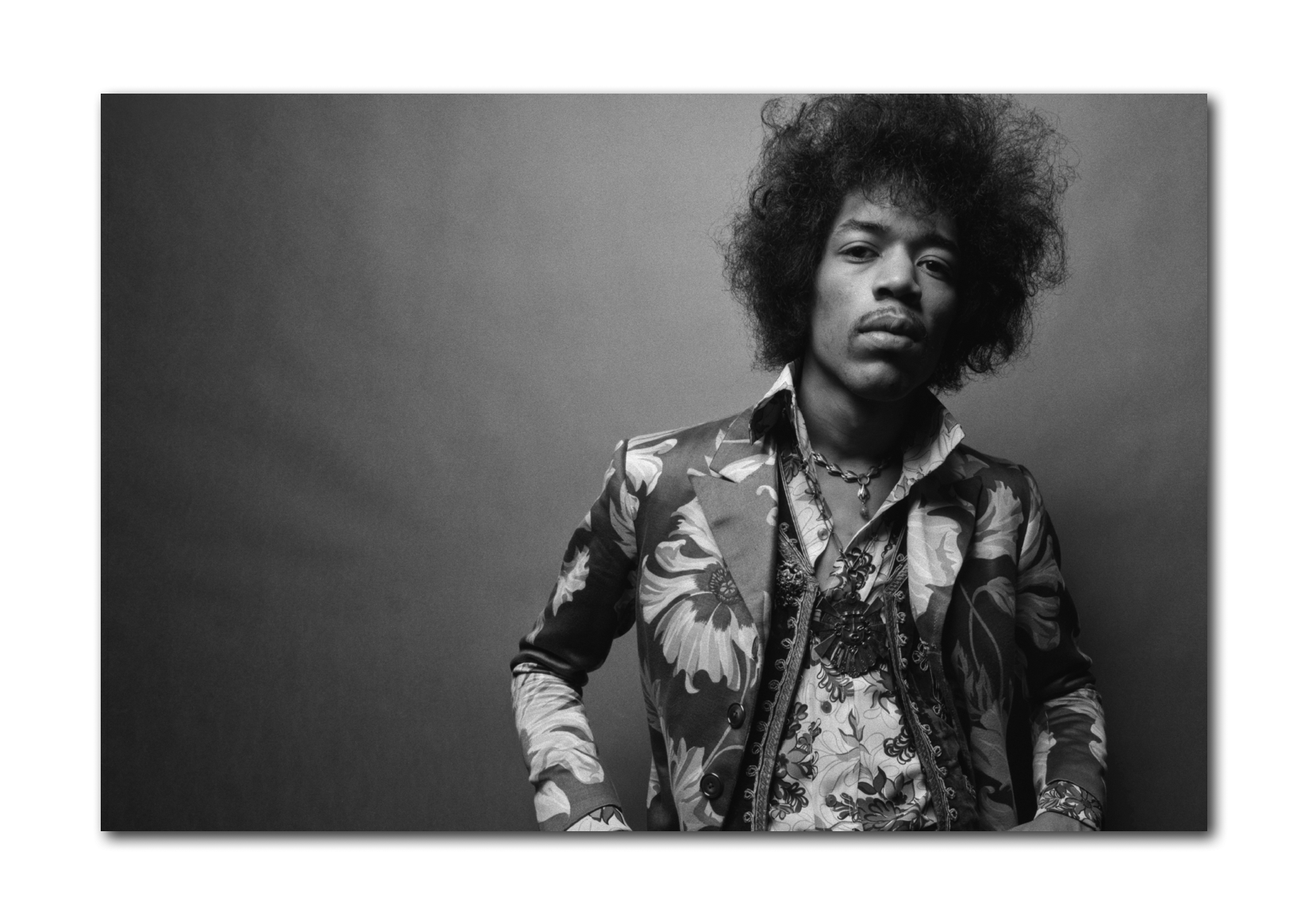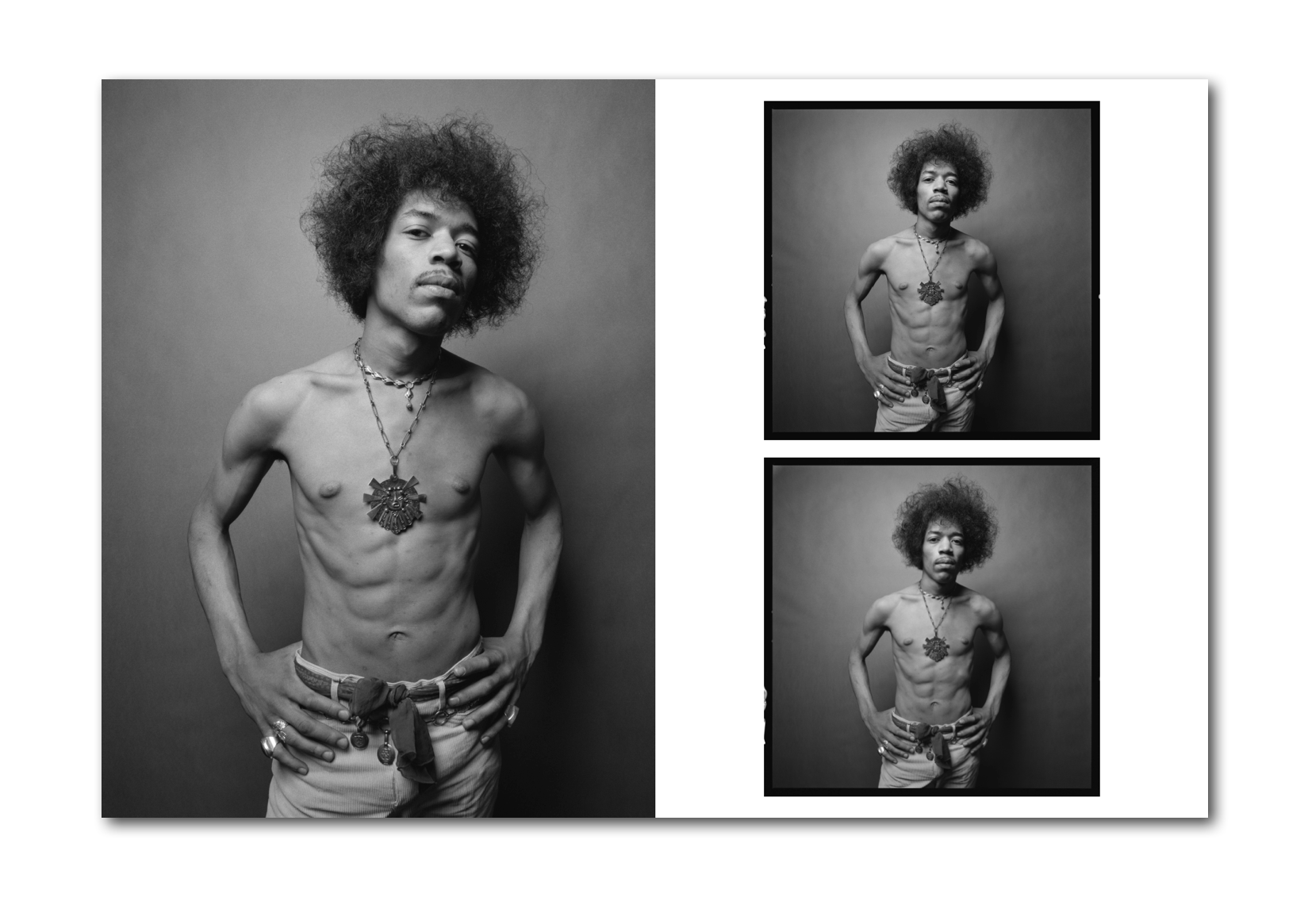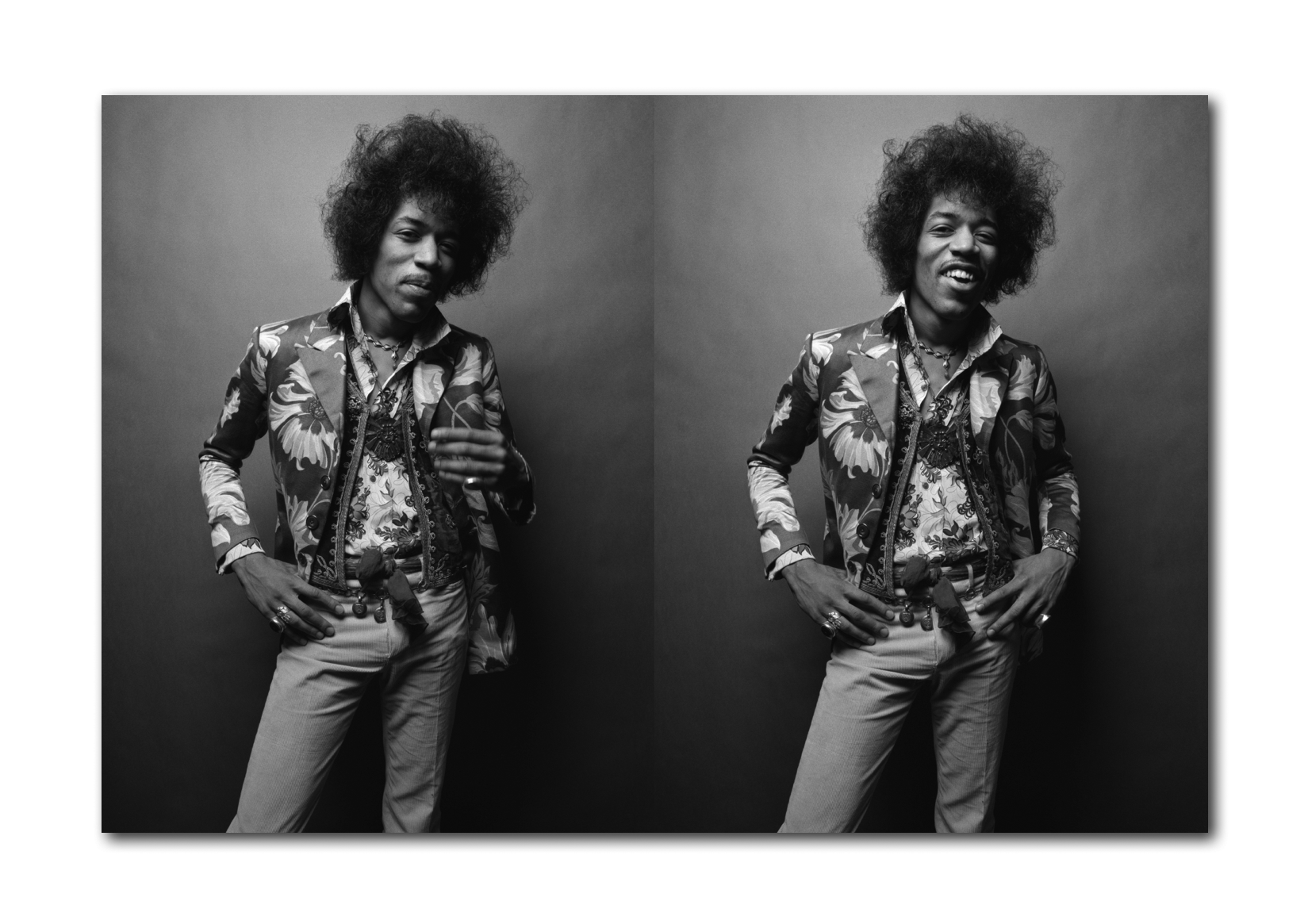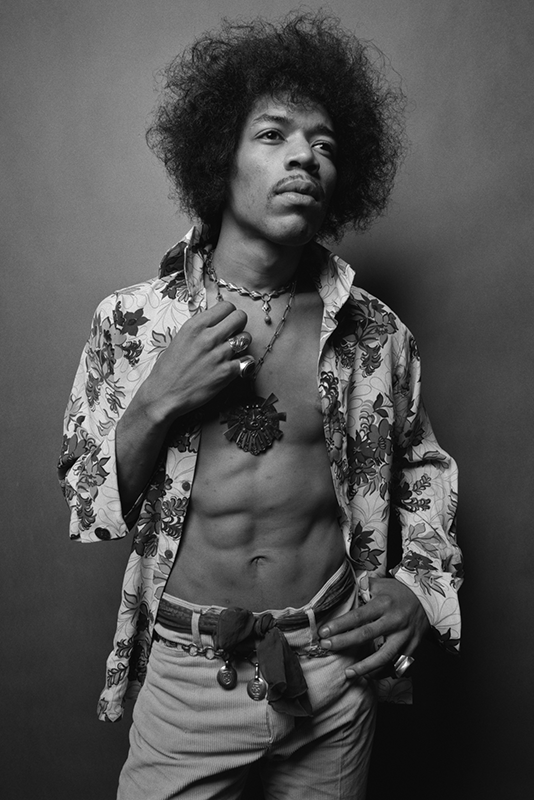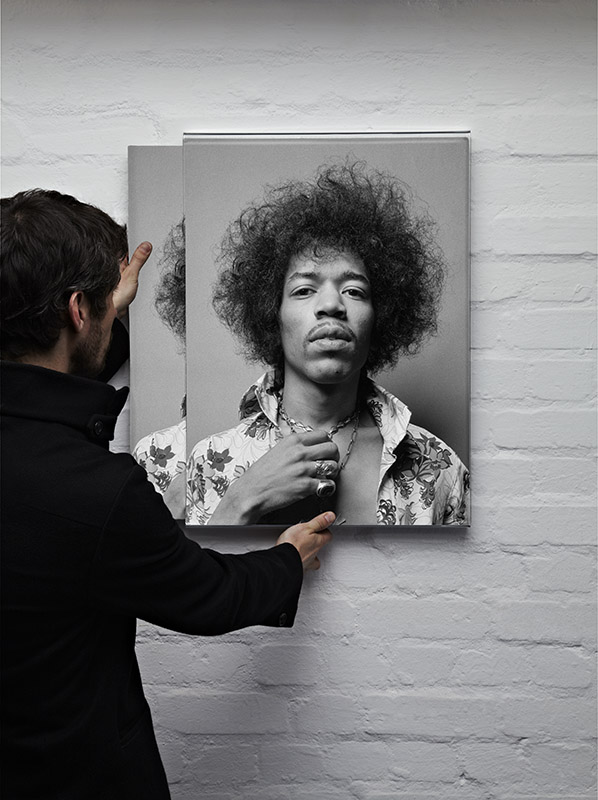Jimi Hendrix by Donald Silverstein
Can You See Me ? the limited edition book from Ormond Yard Press.
Ormond Yard Press: Bringing You The Bigger Picture.
Can You See Me? Jimi Hendrix by Donald Silverstein, the fourth book from our publishing arm, Ormond Yard Press, features the very best from Donald Silverstein’s previously unpublished 1967 archive of Jimi Hendrix photographs.
For my money, Donald Silverstein’s 1967 session is the great undiscovered Jimi Hendrix archive, and this book celebrates these images in glorious ultra-large format.
As with all Ormond Yard Press volumes, it is a book on a spectacular scale: a hardcover volume housed in its own printed slipcase and measuring 24 inches high x 18 inches wide (60x45cm) when closed, 24 x 36 inches (60 x 90cm) when open, with 96 pages of photographs. The physical scale may be large, but the edition size is reassuringly small – just 500 individually numbered copies are available to collectors worldwide.
Why should you buy this book ?
Can You See Me ? presents a collection of previously unseen Jimi Hendrix images by renowned portrait photographer Donald Silverstein (1934-75) taken in London in 1967.
Donald Silverstein’s sole session with Jimi Hendrix produced one of the most important and well known photographs of the incendiary guitarist. Jimi stands, looking into camera, his jacket off, his shirt open, revealing a well defined torso. This powerful image originally appeared on a poster issued by Track Records, and has been heavily bootlegged subsequently. Hendrix fans who have seen that original poster will know that the contrast was notched up to 11 by the designer, and as a result it was very difficult to pick out detail. Seeing the photograph as Donald Silverstein took it, with intricate details revealed by the fine grain of the Kodak Verichrome Pan film that he loaded into his Hasselblad for the shoot, is a complete revelation.
Earlier in the session Donald had photographed Jimi Hendrix flanked by Noel Redding and Mitch Mitchell, for a series of group portraits, one of which would be chosen for the inner gatefold sleeve of the 1 December 1967 UK release of The Experience’s second LP, Axis: Bold as Love, but for the most part, the session was about Jimi.
Incredibly, almost nothing from this incredible shoot has been published, and so Can You See Me ? unlocks the amazing treasure-trove of previously unseen images contained within the Silverstein family’s archive.
Can You See Me ? includes approximately 100 photographs throughout its 96 pages, and contains the very best of Donald Silverstein’s surviving archive of Jimi Hendrix photographs, with the vast majority of photographs previously unpublished.
Can You See Me ? defies the normal ‘coffee table’ convention. Much larger than a traditional coffee table volume, it is slim and elegant at the same time. Can You See Me ? is housed in a beautiful custom slipcase which reproduces the front and back book cover art. All our publications seek to redefine the book as more than just a book – and as a piece of art in its own right. With this in mind, the cover of the book and slipcase have been deliberately left free of text so that nothing detracts from the power of the images.
Why is this book important?
Why is this book important?
First, because this magnificent 1967 archive of photographs is the great unpublished Jimi Hendrix archive. It is too significant and impressive a body of work to remain unseen.
Second, because something revelatory happens when a photograph is presented in a very large format like this. Hidden details come to light, and the power and impact of the image are magnified exponentially. Unless you go to a gallery and see a large format print on the wall, you can’t experience this. Imagine an entire art gallery exhibition that you get to take home and keep forever. That’s where we come in. Our publishing arm, Ormond Yard Press, was established to bring to life a carefully curated series of spectacular large format limited edition photography books.
Liking it so far?
Can You See Me? facts and figures
This ultra-large-format book measures a staggering 18 x 24 inches (45 x 60cm) when closed, and 36 x 24 inches (90 x 60cm) when open.
Can You See Me? has 96 large format pages, with approximately 100 stunning black and white photographs, reproduced in sizes up to 24×36 inches (60x90cm), together with an introductory essay, and is limited to 500 individually numbered copies worldwide.
Can You See Me? is housed in a custom protective slipcase, with front and back cover artwork showing two portraits of Jimi Hendrix.
An optional acrylic slide-in slide-out wall unit allows you to display Can You See Me? on your wall.
Ormond Yard Press: Bringing You The Bigger Picture
Producing Can You See Me ?
Some things just have to be – and this book is one of them.
When I met Lisa Silverstein for coffee in London in early 2014, I knew about the classic image of Jimi Hendrix that had appeared on posters in the late 1960s, and that had been taken by her father Donald. I was not prepared for what was to come however. I remember vividly how Lisa opened a large envelope in front of me, and proceeded to pulled out page after page of contact sheets from that same 1967 session. Even though I was looking at tiny images on the contact sheets, each one a mere 2¼ inch square, I could see immediately that these were very high quality photographs.
The more time I spent with the images, enlarging, cataloguing and analysing them, comparing the angles, details, textures and facial expressions, the more I came to the conclusion that this was one of the most important Jimi Hendrix studio portraits sessions, period. Here was a photographer operating at the peak of his powers, using self evident technical skills, coupled with that bit of magic, possessed by some photographers, that transforms a routine shoot into something on a higher level.
I knew I had to help give this important collection the prominence it deserved. This book is very much a part of that process, and follows on from the world’s first gallery exhibition of photographs from the session which we hosted in the Summer of 2014 at our gallery in St James’s, in central London.
Should a book really be devoted to a single session taken on one day, with one subject ? When the subject is Jimi Hendrix, and the photographer is Donald Silverstein, then the answer to that question is to my mind absolutely, categorically, yes. This is the reason we established our publishing arm, Ormond Yard Press, in the first place: to be able to share incredible images such as these with like-minded photography and music aficionados and collectors, in a beautiful large format limited edition volume.
I hope we can tempt you.
Guy White, publisher, Ormond Yard Press.
Hang your book on your wall
Make no mistake, this is a big book, and we wanted to give you some different display options. Of course you can put it on your coffee table or (big) bookshelf, but we felt it deserved something a bit special. With each of our books, we took a conscious decision to keep the covers free of text, so that nothing would detract from the power of the chosen front and back cover images. That notion gave rise to the idea of this display unit – because it means you can, should you choose to, display your book just like a piece of art on the wall.
Constructed from 5mm clear acrylic, this is a solid, simple and practical way to display your book on your wall in its slipcase. It measures 18.5 inches (w) x 25 inches (h) x 1.5 inches (d). That’s approximately 47cm x 64cm x 4cm. It has curved edges, and a split baton hanging system on the reverse. Acrylic feet at the bottom ensures that it hangs parallel to the wall. It is a nice, elegant, simple, solid piece of work.
It is open sided on the left and right, allowing you to slide your book (and please read ‘book’ as ‘book and slipcase’ here) in and out whenever you want to look at the contents. You also have the flexibility to show the front or the back of the book and flip it over if you feel like a change of view.
Donald Silverstein
Donald Silverstein (1934-75).
New York-born Donald Silverstein (1934-75) started photographing early in life. Given a Rolleiflex camera by his mother at the age of 12, by 19 has was photographing for Glamour Magazine in the US and at 20 has was sent to London on a one year contract for English Vogue by renowned Art Director Alexander Lieberman.
He loved Europe and ended up staying for four years: two in England, and then two years working for French Vogue in Paris. During that period he developed a close friendship with French fashion photographer Guy Bourdin. Donald returned to the US and worked in New York for three years. His strong sense of style comes across clearly in the record sleeve portraits he took during this period for Riverside records, and which won him many awards.
He missed Europe, however, and decided to return, with his family, with London acting as a central base. Donald opened a studio on Riding House Street, just around the corner from Carnaby Street. He shot for fashion publications, newspapers, major advertising agencies. He kept esteemed company. A 1964 Daily Mirror article on Britain’s top photographers shows him alongside Bailey, Donovan and Duffy.
He was an award-winning photographer, collecting over 50 professional awards in the course of his career. A medal in the 1968 Design and Art Directors awards for his photograph of a little boy with a bandaged eye (used in adverts for preventing accidents from fireworks), was followed by four medals in 1969 including an award (with Alan Aldridge) for the iconic 1968 poster image used for the London screening of Andy Warhol’s Chelsea Girls movie, which featured his photograph of a provocatively posed young model, now artist, Clare Shenstone.
He loved music and was thrilled to receive the Jimi Hendrix commission in 1967, creating what has become his most well known image, and one of the most important images of Jimi Hendrix. Donald led a vibrant life, but died too young, in 1975.
Questions?
If you have any questions at all about Can You See Me? please just ask – we are here to help.

